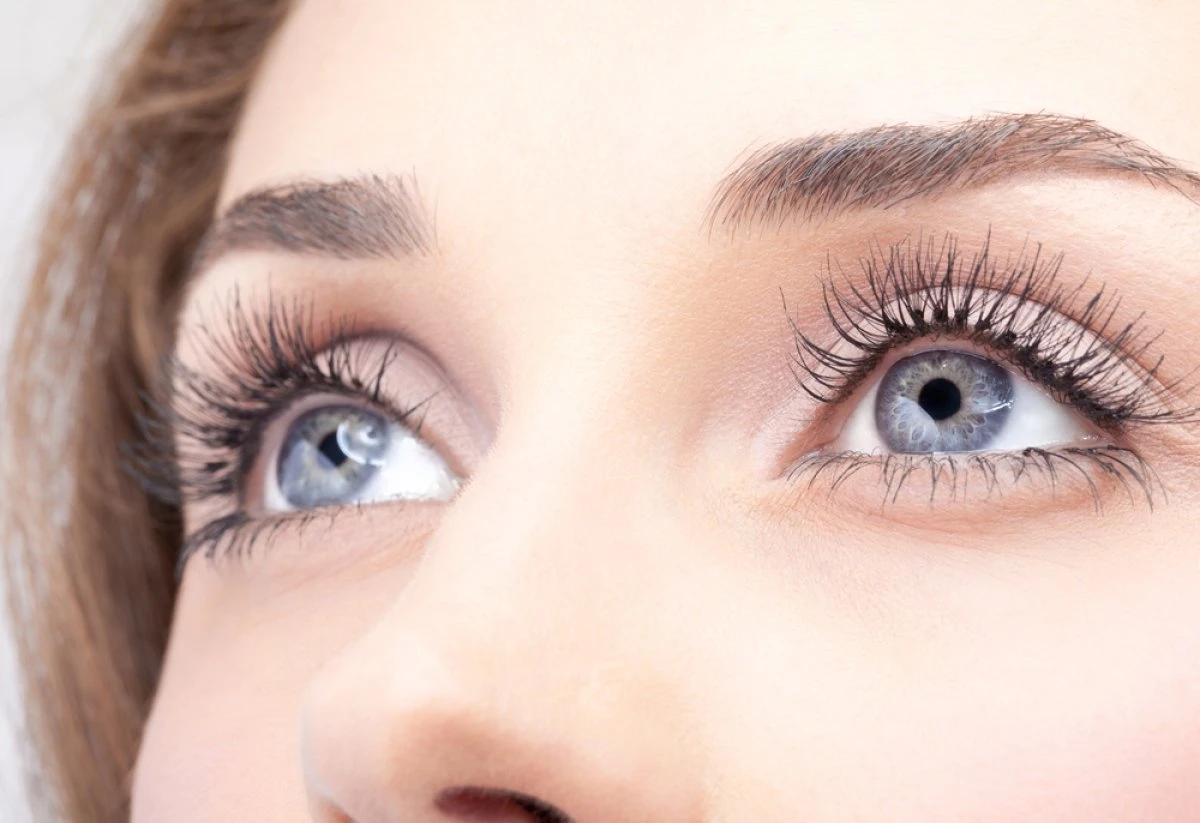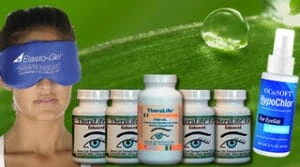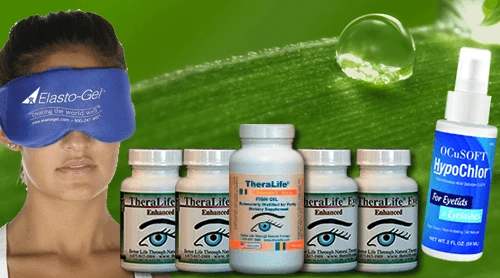Introduction – Prevent Sleep Debris
To effectively reduce sleep debris build-up and enhance overall sleep health, incorporating TheraLife’s range of products can be highly beneficial. TheraLife’s innovative solutions are designed to support various aspects of health that contribute directly to improved sleep quality.
Firstly, integrating TheraLife Eye Enhanced products into your nighttime routine can help manage conditions like dry eyes, often aggravated during sleep, ensuring comfort and reducing disruptions. This is particularly useful for those experiencing autoimmune dry eye or menopause-related dry eye symptoms, where maintaining adequate hydration and eye health during sleep is crucial.
Additionally, TheraLife’s Autoimmune Starter Kit provides a comprehensive approach to managing autoimmune symptoms that may interfere with sleep, such as systemic inflammation or related discomforts.
For those looking to optimize their body’s natural detoxification processes during sleep, TheraLife’s Fish Oil supplements offer a rich source of Omega-3 fatty acids, supporting brain health and facilitating the glymphatic system‘s function to clear out toxins effectively.
Utilizing TheraLife’s hot compress for eyes before bedtime can soothe the eyes and prepare you for a restful sleep, and avoid sleep debris in the morning. while their Eye Lid Cleanser helps maintain hygiene and prevent irritations that could disrupt sleep.
Moreover, TheraLife’s MaculaEye supplements are ideal for maintaining overall eye health, ensuring that vision-related complications do not disturb sleep patterns to avoid sleep debris in the morning.
By adopting these TheraLife products, you not only support your sleep quality but also embrace a holistic approach to health that aligns with your body’s natural rhythms, thereby optimizing the brain’s cleaning processes during deep sleep stages.
This comprehensive care routine encourages a consistent sleep schedule, boosting melatonin production and enhancing your body’s ability to rejuvenate overnight.
Add To Cart
Key Takeaways- Prevent Sleep Debris
- Utilize TheraLife’s All-in-One Eye Enhanced Starter Kit to maintain a consistent sleep schedule by promoting eye comfort and reducing dry-eye symptoms, thereby enhancing natural detoxification during sleep to prevent sleep debris.
- Incorporate TheraLife Eye Lid Cleanser in your bedtime routine to ensure clean and hydrated eyelids, promoting deeper and uninterrupted sleep stages to avoid sleep debris.
- Reduce evening intake of stimulants and complement your wellness routine with TheraLife’s Fish Oil supplements to balance mood and energy, thereby preventing sleep interruptions. to avoid sleep debris.
- Enhance hydration and overall detox processes by integrating TheraLife’s Autoimmune Dry Eye remedy, which supports systemic hydration and relieves dry eye symptoms effectively.
- Address and manage allergies and eye infections with TheraLife’s comprehensive eye health solutions, including their Hot Compress for Eyes, reducing mucus and crust formation and enabling better sleep quality to avoid sleep debris.
Optimize Your Sleep Schedule to Prevent Sleep Debris
How can optimizing your sleep schedule enhance your brain’s ability to clear out toxins? Aligning your sleep with your body’s natural rhythm is key. A consistent schedule not only reinforces your internal clock but also optimizes the brain cleaning process during deep sleep stages. You’re aiming for 7-9 hours of quality sleep each night, ensuring that the glymphatic system works efficiently to detoxify your brain.
Irregular sleep patterns disrupt this process, reducing the effectiveness of these important cleaning cycles. As such, it’s essential to maintain a regular bedtime and wake-up time, even on weekends. This consistency aids in achieving the deeper sleep stages where most cleaning occurs.
To support this, you’ll need to adopt sleep hygiene practices that foster a comfortable sleep environment. This includes maintaining a cool, quiet, and dark room. Also, consider the impact of screen time before bedtime. The blue light emitted by screens can interfere with your sleep quality by disrupting the production of melatonin, the hormone responsible for sleep regulation.
Limiting this exposure can greatly improve your sleep quality, further promoting the brain’s natural detoxification process during those critical sleeping hours.
Establish a Nighttime Routine To Prevent Sleep Debris
Building on the importance of a consistent sleep schedule, establishing a nighttime routine further enhances your body’s ability to prepare for rest. By crafting a bedtime routine that includes relaxing activities, you’re effectively sending bedtime signals to your internal clock, aiding in winding down and enhancing melatonin production.
This hormone is vital for regulating your sleep-wake cycle, and its production can be facilitated by your nightly habits.
Consider incorporating activities such as reading or taking a warm bath into your sleep routine. These actions not only relax your body but also prepare your mind for sleep, signaling that it’s time to slow down.
Additionally, make sure your sleep environment is conducive to rest. This means maintaining a cool room temperature and investing in comfortable bedding, both of which are essential for a comfortable sleep environment.
Limit Evening Stimulants To Prevent Sleep Debris
To promote better sleep, avoid consuming stimulants like caffeine and nicotine in the evening. These substances can greatly disrupt your sleep patterns, leading to sleep disturbances and an increase in debris build-up in your brain.
When you consume stimulants too close to bedtime, they not only make it harder to fall asleep but also interfere with the essential brain cleaning process that occurs during sleep. This disruption can result in the accumulation of toxins and waste, compromising your sleep quality.
Limiting your intake of these stimulants in the hours leading up to sleep supports your brain’s natural detoxification mechanisms. Research suggests that reducing stimulant intake before bedtime not only enhances your sleep hygiene but also improves your cognitive function by allowing your brain to efficiently remove waste and rejuvenate overnight.
Consider establishing a stimulant-free evening routine to further bolster your brain’s waste management system. This practice can lead to a deeper, more restful sleep, ensuring you wake up feeling refreshed and alert.
Hydrate Throughout the Day To Prevent Sleep Debris
While limiting evening stimulants is important, equally vital is making sure you’re drinking enough water throughout the day. Proper hydration plays a pivotal role in maintaining your body’s overall health and particularly in combating sleep debris.
When you’re adequately hydrated, your body efficiently manages detoxification and waste removal.
Here’s why keeping up with your water intake is essential:
- Detoxification: Hydration aids your body’s natural ability to detoxify, ensuring that toxins don’t build up and affect your sleep.
- Waste Removal: Sufficient fluid circulation prevents the stagnation of metabolic waste products that can impact your well-being.
- Prevention of Dehydration: Avoiding dehydration is key as it can lead to the accumulation of toxins, negatively influencing both your sleep quality and health.
- Support for Sleep: By flushing out unwanted substances, proper hydration decreases the likelihood of sleep debris affecting your rest.
Manage Allergies and Infections To Prevent Sleep Debris
Managing your allergies and infections effectively can greatly reduce the accumulation of sleep debris. When allergies trigger excessive mucus production in your eyes, it can lead to the uncomfortable build-up you notice upon waking. Similarly, infections often increase eye discharge, resulting in crusty residues that aren’t just bothersome but can also impair your vision temporarily in the morning.
Proper management of these conditions is essential. By treating the underlying cause of your persistent allergies or infections, you can greatly minimize the production of mucus and the subsequent crust formation around your eyes. This proactive approach not only enhances your eye health but also contributes to better sleep quality by reducing irritation and discomfort.
It’s vital to seek medical advice if you’re experiencing ongoing issues with allergies or infections. A healthcare provider can offer tailored treatments that target the root of your problem, thereby helping to lessen the production of sleep debris.
Frequently Asked Questions – To Prevent Sleep Debris
How Do You Get Rid of Sleep Gunk?
To effectively address sleep gunk, TheraLife offers a comprehensive range of products designed to enhance eye health and reduce the discomfort associated with dry eyes and other related conditions. TheraLife’s Eye Enhanced Starter Kit is an integral solution for individuals suffering from chronic dry eye syndrome, helping to restore the eyes’ natural ability to produce tears. The kit includes the TheraLife Eye capsules, which have been clinically proven to improve ocular health by increasing intracellular hydration, thereby reducing eye irritation and the accumulation of sleep debris.
For those dealing with autoimmune-related dry eye conditions, the All-in-One Autoimmune Starter Kit is particularly beneficial. It combines the effectiveness of TheraLife Eye Autoimmune capsules with a specialized fish oil supplement known for its anti-inflammatory properties, aiding in the reduction of eyelid swelling and discomfort.
Additional support is provided through TheraLife’s Hot Compress for Eyes and Eye Lid Cleanser products. The hot compress helps soothe and relieve irritation by providing moist heat that aids in the secretion of oils from the glands in the eyelids. This reduces the stickiness and accumulation of sleep gunk. Meanwhile, the Eye Lid Cleanser ensures the eyelids are free from bacterial buildup and debris, further preventing irritation and promoting overall eye health.
For individuals experiencing dry eyes during menopause, TheraLife’s targeted solutions like the Menopause Dry Eye Relief help address hormonal changes that can exacerbate eye dryness and sleep gunk formation.
Lastly, TheraLife’s MaculaEye is formulated to support retinal health, crucial for maintaining clear, irritation-free eyes.
Through these targeted products, TheraLife aids in significantly reducing the build-up of sleep debris, ensuring a cleaner, healthier ocular surface and a more comfortable sleep experience.
Why Is Gunk Coming Out of My Eye?
If you’re experiencing issues with eye discharge, TheraLife‘s range of products offers targeted solutions that can be highly beneficial. TheraLife is dedicated to addressing various eye conditions naturally, focusing on restoring your eyes’ own ability to heal. Their approach is rooted in enhancing the body’s cellular functions to improve tear secretion and reduce inflammation.
For those suffering from dry eyes, autoimmune conditions, or menopause-related eye issues, TheraLife provides specific kits like the All-in-One Eye Enhanced Starter Kit and the All-in-One Autoimmune Starter Kit. These kits include a combination of their patented eye capsules, fish oil supplements to reduce inflammation, and hot compresses to soothe irritation.
Additionally, TheraLife’s Eye Lid Cleanser is excellent for maintaining eyelid hygiene, crucial for preventing the build-up of discharge. Their Fish Oil supplements are particularly effective for reducing dry eye symptoms by improving the eye’s lipid layer, thus enhancing tear quality and reducing tear evaporation.
For users with macular concerns, the MaculaEye product offers vital nutrients to help protect and maintain eye health, particularly beneficial for aging eyes.
Why Do I Wake up With Gunk in My Eyes?
Eye gunk formation upon waking can be significantly mitigated by using TheraLife‘s range of dedicated eye health products. TheraLife has developed a comprehensive approach to eye care, particularly targeting issues such as dry eyes, autoimmune dry eyes, and menopause-related dry eyes.
Their All-in-One Eye Enhanced and Autoimmune Starter Kits provide an integrated solution to improve tear quality, reduce inflammation, and restore normal tear functions naturally.
TheraLife’s products work by revitalizing the eyes’ intrinsic ability to heal and maintain moisture. Their Eye Enhanced formula supports better circulation and cellular function in the eye, while the autoimmune formula specifically addresses the complications that arise in patients with autoimmune conditions.
Both kits include components like the Hot Compress for Eyes, which helps relieve irritation and stimulate tear secretion, and the Eye Lid Cleanser which maintains lid hygiene to prevent the buildup of debris overnight.
Additionally, TheraLife’s Fish Oil supplements offer omega-3 fatty acids essential for maintaining healthy tear film and ocular surface. The MaculaEye product supports overall eye health and vision clarity, particularly beneficial for those experiencing macular health issues.
How to Get Rid of Stringy Eye Mucus?
To effectively address stringy eye mucus, TheraLife offers a comprehensive range of products that enhance eye health and hygiene. TheraLife’s Eye Enhanced Starter Kit is particularly beneficial, providing essential nutrients and hydration to reduce mucus production and improve overall eye comfort.
TheraLife’s approach is rooted in targeting the underlying causes of dry eyes and irritation, as explained in their publications and FAQs. Utilizing TheraLife’s Autoimmune Dry Eye solution can be especially effective for those suffering from autoimmune-related eye conditions. Their products, including quality fish oil supplements and a specialized eye lid cleanser, help to soothe irritation and maintain healthy tear production.
The use of TheraLife’s hot compress for eyes further aids in relieving discomfort and stimulating natural tear secretion. Moreover, TheraLife addresses specific conditions like menopause-related dry eyes and offers targeted support through products like MaculaEye for macular health.
Their comprehensive approach ensures that all aspects of eye health are covered, making TheraLife a valuable ally in reducing and managing the occurrence of stringy eye mucus.
Conclusion
Ready to experience true rejuvenation upon waking? Integrating TheraLife‘s range of products into your sleep routine can significantly enhance your sleep quality. TheraLife’s all-in-one solutions for autoimmune and dry eye conditions can alleviate discomfort that might disrupt your sleep. By using TheraLife Eye Enhanced and Autoimmune Starter Kits, you address underlying ocular issues, ensuring a more comfortable and uninterrupted rest.
Limiting evening stimulants while incorporating TheraLife Fish Oil can help reduce inflammation and promote calmness, aiding in a restful night. Ensure you stay hydrated throughout the day with adequate fluids, and consider using TheraLife’s Hot Compress for Eyes to relax before bedtime, further preventing sleep disturbances.
Managing allergies and eye infections is crucial for uninterrupted sleep, and TheraLife Eye Lid Cleanser offers an effective solution to keep your eyelids clean and free from irritants. For women experiencing menopause-related dry eyes, TheraLife Menopause Dry Eyes provides targeted relief, enhancing sleep quality.
By adopting these TheraLife-enhanced strategies, not only will you build a robust framework for achieving clear and ideal sleep, but you’ll also improve your overall health and well-being, thanks to the therapeutic benefits of TheraLife’s comprehensive product range.
References
- 1.The definition and classification of dry eye disease: report of the Definition and Classification Subcommittee of the International Dry Eye WorkShop (2007). Ocul Surf. 2007 Apr;5(2):75-92. [PubMed]
- 2.Huang R, Su C, Fang L, Lu J, Chen J, Ding Y. Dry eye syndrome: comprehensive etiologies and recent clinical trials. Int Ophthalmol. 2022 Oct;42(10):3253-3272. [PMC free article] [PubMed]
- 3.Craig JP, Nichols KK, Akpek EK, Caffery B, Dua HS, Joo CK, Liu Z, Nelson JD, Nichols JJ, Tsubota K, Stapleton F. TFOS DEWS II Definition and Classification Report. Ocul Surf. 2017 Jul;15(3):276-283. [PubMed]
- 4.King-Smith PE, Fink BA, Hill RM, Koelling KW, Tiffany JM. The thickness of the tear film. Curr Eye Res. 2004 Oct-Nov;29(4-5):357-68. [PubMed]
- 5.King-Smith PE, Fink BA, Fogt N, Nichols KK, Hill RM, Wilson GS. The thickness of the human precorneal tear film: evidence from reflection spectra. Invest Ophthalmol Vis Sci. 2000 Oct;41(11):3348-59. [PubMed]
- 6.Chen Q, Wang J, Tao A, Shen M, Jiao S, Lu F. Ultrahigh-resolution measurement by optical coherence tomography of dynamic tear film changes on contact lenses. Invest Ophthalmol Vis Sci. 2010 Apr;51(4):1988-93. [PMC free article] [PubMed]
- 7.Willcox MDP, Argüeso P, Georgiev GA, Holopainen JM, Laurie GW, Millar TJ, Papas EB, Rolland JP, Schmidt TA, Stahl U, Suarez T, Subbaraman LN, Uçakhan OÖ, Jones L. TFOS DEWS II Tear Film Report. Ocul Surf. 2017 Jul;15(3):366-403. [PMC free article] [PubMed]
- 8.Peng CC, Cerretani C, Braun RJ, Radke CJ. Evaporation-driven instability of the precorneal tear film. Adv Colloid Interface Sci. 2014 Apr;206:250-64. [PubMed]
- 9.Zhou L, Beuerman RW. Tear analysis in ocular surface diseases. Prog Retin Eye Res. 2012 Nov;31(6):527-50. [PubMed]
- 10.Mantelli F, Mauris J, Argüeso P. The ocular surface epithelial barrier and other mechanisms of mucosal protection: from allergy to infectious diseases. Curr Opin Allergy Clin Immunol. 2013 Oct;13(5):563-8. [PMC free article] [PubMed]
- 11.O’Neil EC, Henderson M, Massaro-Giordano M, Bunya VY. Advances in dry eye disease treatment. Curr Opin Ophthalmol. 2019 May;30(3):166-178. [PMC free article] [PubMed]
- 12.Fjaervoll K, Fjaervoll H, Magno M, Nøland ST, Dartt DA, Vehof J, Utheim TP. Review on the possible pathophysiological mechanisms underlying visual display terminal-associated dry eye disease. Acta Ophthalmol. 2022 Dec;100(8):861-877. [PMC free article] [PubMed]
- 13.Craig JP, Nelson JD, Azar DT, Belmonte C, Bron AJ, Chauhan SK, de Paiva CS, Gomes JAP, Hammitt KM, Jones L, Nichols JJ, Nichols KK, Novack GD, Stapleton FJ, Willcox MDP, Wolffsohn JS, Sullivan DA. TFOS DEWS II Report Executive Summary. Ocul Surf. 2017 Oct;15(4):802-812. [PubMed]
- 14.Qian L, Wei W. Identified risk factors for dry eye syndrome: A systematic review and meta-analysis. PLoS One. 2022;17(8):e0271267. [PMC free article] [PubMed]
- 15.I Y Hasan ZA. Dry eye syndrome risk factors: A systemic review. Saudi J Ophthalmol. 2021 Apr-Jun;35(2):131-139. [PMC free article] [PubMed]
- 16.Paulsen AJ, Cruickshanks KJ, Fischer ME, Huang GH, Klein BE, Klein R, Dalton DS. Dry eye in the beaver dam offspring study: prevalence, risk factors, and health-related quality of life. Am J Ophthalmol. 2014 Apr;157(4):799-806. [PMC free article] [PubMed]
- 17.Chang CJ, Somohano K, Zemsky C, Uhlemann AC, Liebmann J, Cioffi GA, Al-Aswad LA, Lynch SV, Winn BJ. Topical Glaucoma Therapy Is Associated With Alterations of the Ocular Surface Microbiome. Invest Ophthalmol Vis Sci. 2022 Aug 02;63(9):32. [PMC free article] [PubMed]
- 18.Andole S, Senthil S. Ocular Surface Disease and Anti-Glaucoma Medications: Various features, Diagnosis, and Management Guidelines. Semin Ophthalmol. 2023 Feb;38(2):158-166. [PubMed]
- 19.Sobolewska B, Schaller M, Zierhut M. Rosacea and Dry Eye Disease. Ocul Immunol Inflamm. 2022 Apr 03;30(3):570-579. [PubMed]
- 20.Bilgic AA, Kocabeyoglu S, Dikmetas O, Tan C, Karakaya J, Irkec M. Influence of video display terminal use and meibomian gland dysfunction on the ocular surface and tear neuromediators. Int Ophthalmol. 2023 May;43(5):1537-1544. [PubMed]
- 21.Al Sabti K, Zechevikj S, Raizada S. Evaluation of lipid layer tear film changes after femtosecond small incision lenticule extraction. Ther Adv Ophthalmol. 2022 Jan-Dec;14:25158414221129534. [PMC free article] [PubMed]
- 22.Napoli PE, Nioi M, Iovino C, Sanna R, d’Aloja E, Fossarello M. Ocular surface and respiratory tract damages from occupational, sub-chronic exposure to fluorspar: case report and other considerations. Int Ophthalmol. 2019 May;39(5):1175-1178. [PubMed]
- 23.Suárez-Cortés T, Merino-Inda N, Benitez-Del-Castillo JM. Tear and ocular surface disease biomarkers: A diagnostic and clinical perspective for ocular allergies and dry eye disease. Exp Eye Res. 2022 Aug;221:109121. [PubMed]
- 24.Truong S, Cole N, Stapleton F, Golebiowski B. Sex hormones and the dry eye. Clin Exp Optom. 2014 Jul;97(4):324-36. [PubMed]
- 25.Talens-Estarelles C, García-Marqués JV, Cerviño A, García-Lázaro S. Dry Eye-Related Risk Factors for Digital Eye Strain. Eye Contact Lens. 2022 Oct 01;48(10):410-415. [PubMed]
- 26.Chakraborty U, Chandra A. Bitot’s spots, dry eyes, and night blindness indicate vitamin A deficiency. Lancet. 2021 Jan 16;397(10270):e2. [PubMed]
- 27.Altinbas E, Elibol A, Fıratlı G, Ayhan C, Celebi ARC. Assessment of risk factors on eye dryness in young adults using visual display device in both contact lens wearers and non-wearers. Int Ophthalmol. 2023 Feb;43(2):441-450. [PMC free article] [PubMed]
- 28.Trindade M, Rodrigues M, Pozzebon ME, Aranha FJP, Colella MP, Fernandes A, Fornazari DO, de Almeida Borges D, Vigorito AC, Alves M. A plethora of ocular surface manifestations in a multidisciplinary ocular graft-versus-host disease unit. Sci Rep. 2022 Sep 23;12(1):15926. [PMC free article] [PubMed]
- 29.Choudhry HS, Hosseini S, Choudhry HS, Fatahzadeh M, Khianey R, Dastjerdi MH. Updates in diagnostics, treatments, and correlations between oral and ocular manifestations of Sjogren’s syndrome. Ocul Surf. 2022 Oct;26:75-87. [PubMed]
- 30.Zou X, Lu L, Xu Y, Zhu J, He J, Zhang B, Zou H. Prevalence and clinical characteristics of dry eye disease in community-based type 2 diabetic patients: the Beixinjing eye study. BMC Ophthalmol. 2018 May 10;18(1):117. [PMC free article] [PubMed]





